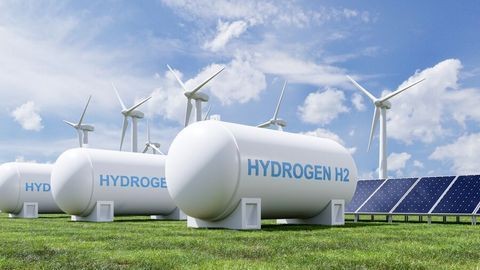NERC Publishes Guidance for Wind and Solar Generators
Client Alert | 3 min read | 01.28.19
The North American Electric Reliability Corporation (NERC) published guidance on how it expects its compliance staff to assess certain reliability risk mitigation practices of Generator Owners (GO) that own inverter-based resources, such as wind and solar generation facilities. The guidance focuses on three areas―consistent injection of power, coordination of voltage regulating controls and protection settings, and modeling. Understanding these lines of inquiry and NERC’s focus can allow GOs to make changes, as necessary, to ensure compliance with relevant NERC reliability standards.
Consistent Injection of Power
NERC provides guidance on what its compliance staff should understand about an inverter-based resource’s ability to provide real and reactive power within the “No Trip” zone defined in PRC-024-2, including the likelihood of “momentary cessation” occurring during frequency and voltage excursions. NERC considers momentary cessation to be a trip of the generating unit, and has determined that momentary cessation hinders the ability of an inverter-based resource to provide support during such excursions. NERC compliance staff will evaluate the following:
- How has the GO set its protective functions at both the plant controller and individual inverter level to remain connected and injecting current to provide real and reactive power within the “No Trip” zone defined in PRC-024-2?
- How has the GO determined the minimum and maximum voltage and frequency excursions it is able to ride-through?
- What equipment limitations exist, if any, that prevent the GO’s inverter-based resources from remaining connected and injecting current to provide real and reactive power within the “No Trip” zone defined in PRC-024-2?
Coordination of Voltage Regulating Controls and Protection Settings
In connection with PRC-019-02, NERC directs compliance staff to gain an understanding of how GOs and Transmission Owners (TO) verify coordination of voltage regulating controls, limit functions, equipment capabilities, and Protection System settings at both the individual inverters and at the generator’s point of interconnection, specifically:
- How do the GO and TO coordinate voltage regulating controls with the applicable equipment capabilities and settings of the applicable Protection System devices and functions (including in-service limiters and protection functions)?
- What does the GO consider that could trip the individual inverters? How are those trip settings coordinated with the individual inverter capability and limiters?
- If the generation is a current-limited device, then how are the current limits coordinated with protection (for each type of protection) to maintain power production and voltage control (via reactive power production)?
- What limiters and protection exist at the power plant level (e.g., at the plant controller or Point of Interconnection), and how are those settings coordinated to prevent individual inverters from tripping unnecessarily?
- How does the GO ensure that its individual turbine-level controls are functioning properly and coordinated with its plant level controller (e.g., configured with appropriate dead bands and frequency droop), both during steady-state conditions and during ride-through operations?
- How has the GO implemented recommendations from the NERC Alert related to momentary cessation mitigation?
Accurate and Coordinated Modeling
NERC directs its compliance staff to understand the following about the processes inverter-based resource GOs use to provide modeling data requested per Planning Coordinator/Transmission Planner specifications:
- What steps has the GO taken to validate that its model data matches actual system behavior and accurately represents generator responses?
- How does the GO ensure the physical properties and responses to staged tests or measured system responses are accurately represented in dynamic models?
- Is GO verification testing consistent with established best practices as outlined in NERC Reliability Guidelines for synchronous machines and inverter-based resources?
- What steps did the GO take to ensure its dynamic model data met Planning Coordinator/Transmission Planner specifications and accurately represented the operation of its inverter-based resource?
- Does the data supplied by the inverter manufacturer show the specific parameters used for this make and model of the inverter?
- Does commissioning data show the gains and time constants of the inverter-level and plant-level controls that are site-specific?
- How does the GO determine the output of the actual inverter matches the output of the models from tests or actual events?
- What controls do the test engineers have in place to ensure accurate measurements are obtained during testing and commissioning?
- Do resources operating with momentary cessation meet the dynamic model specifications from the Planning Coordinator/Transmission Planner?
Contacts
Insights
Client Alert | 2 min read | 12.19.25
GAO Cautions Agencies—Over-Redact at Your Own Peril
Bid protest practitioners in recent years have witnessed agencies’ increasing efforts to limit the production of documents and information in response to Government Accountability Office (GAO) bid protests—often will little pushback from GAO. This practice has underscored the notable difference in the scope of bid protest records before GAO versus the Court of Federal Claims. However, in Tiger Natural Gas, Inc., B-423744, Dec. 10, 2025, 2025 CPD ¶ __, GAO made clear that there are limits to the scope of redactions, and GAO will sustain a protest where there is insufficient evidence that the agency’s actions were reasonable.
Client Alert | 7 min read | 12.19.25
In Bid to Ban “Woke AI,” White House Imposes Transparency Requirements on Contractors
Client Alert | 5 min read | 12.19.25
Navigating California’s Evolving Microplastics Landscape in 2026
Client Alert | 19 min read | 12.18.25
2025 GAO Bid Protest Annual Report: Where Have All the Protests Gone?



